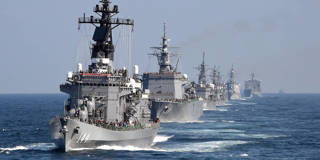In new strategy documents, Japan’s government has broken new ground with a public commitment to build up the country’s counterstrike and rapid mobilization capabilities. Though executing this task will not be easy, it has become essential to peace in the region.
LONDON – Japan’s response to Russia’s invasion of Ukraine, and to the “strategic partnership” that Russia and China announced shortly beforehand, has been impressively decisive. The government’s proposal for a near-doubling of the country’s defense budget over the next five years demonstrates political realism and practical determination. The key question now is how to spend the money.

LONDON – Japan’s response to Russia’s invasion of Ukraine, and to the “strategic partnership” that Russia and China announced shortly beforehand, has been impressively decisive. The government’s proposal for a near-doubling of the country’s defense budget over the next five years demonstrates political realism and practical determination. The key question now is how to spend the money.